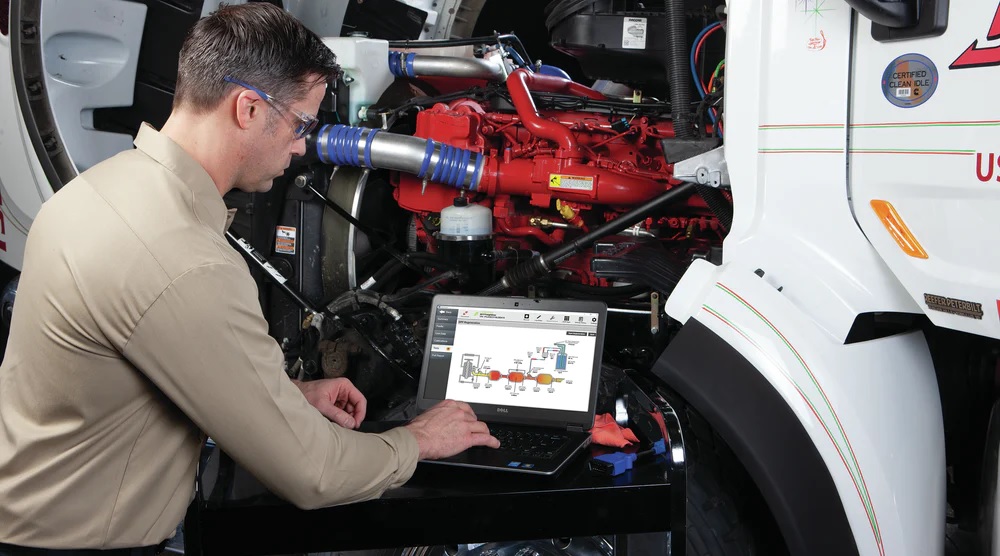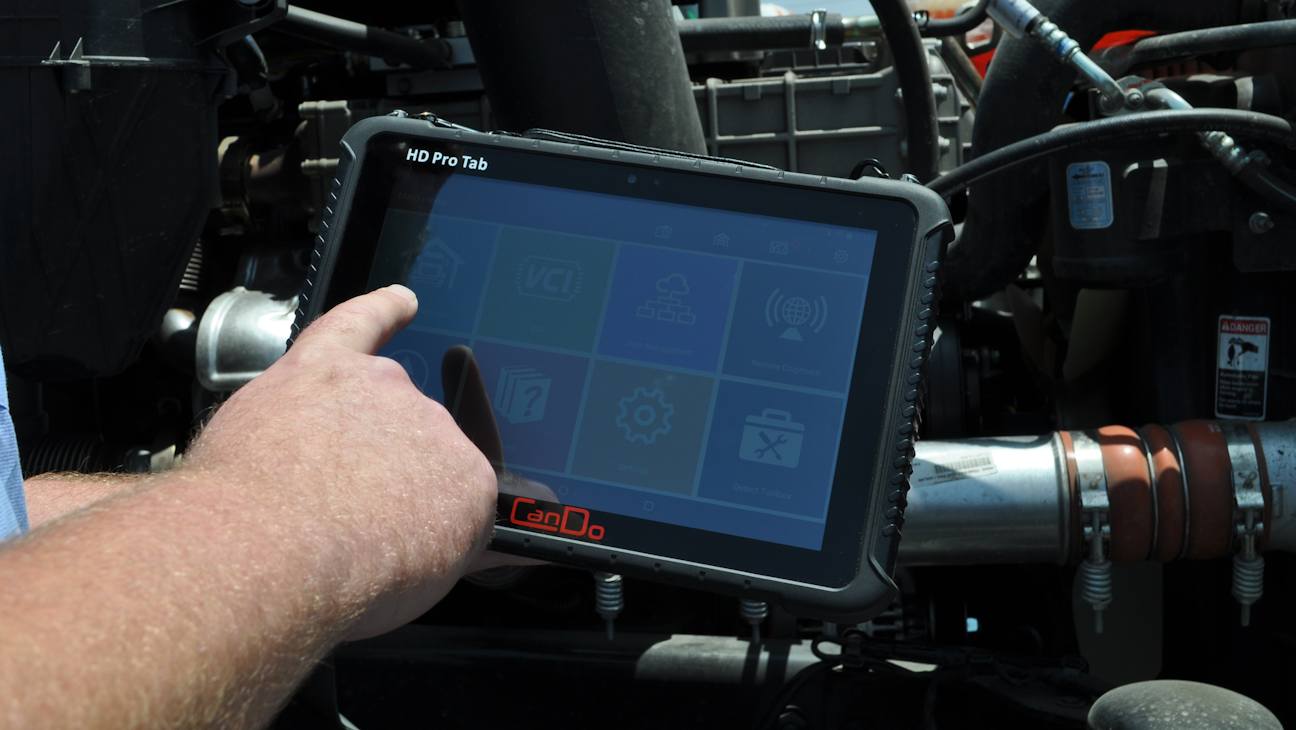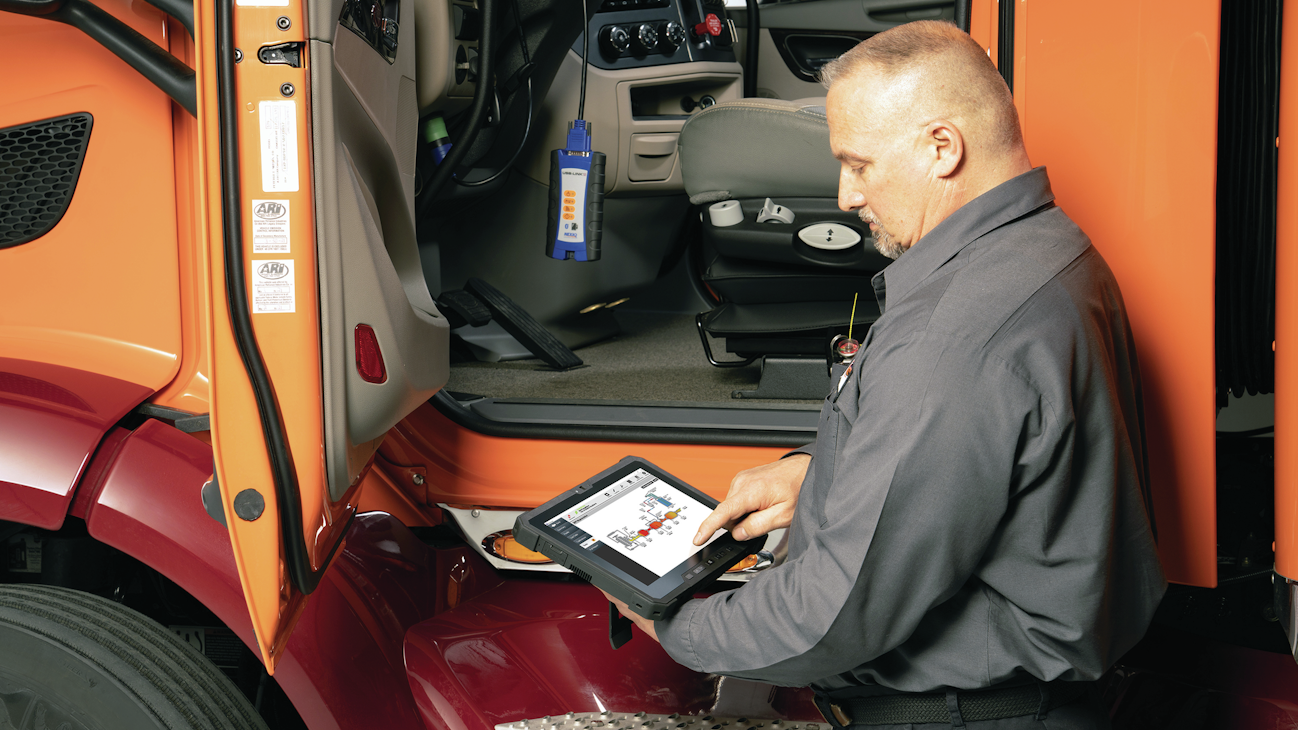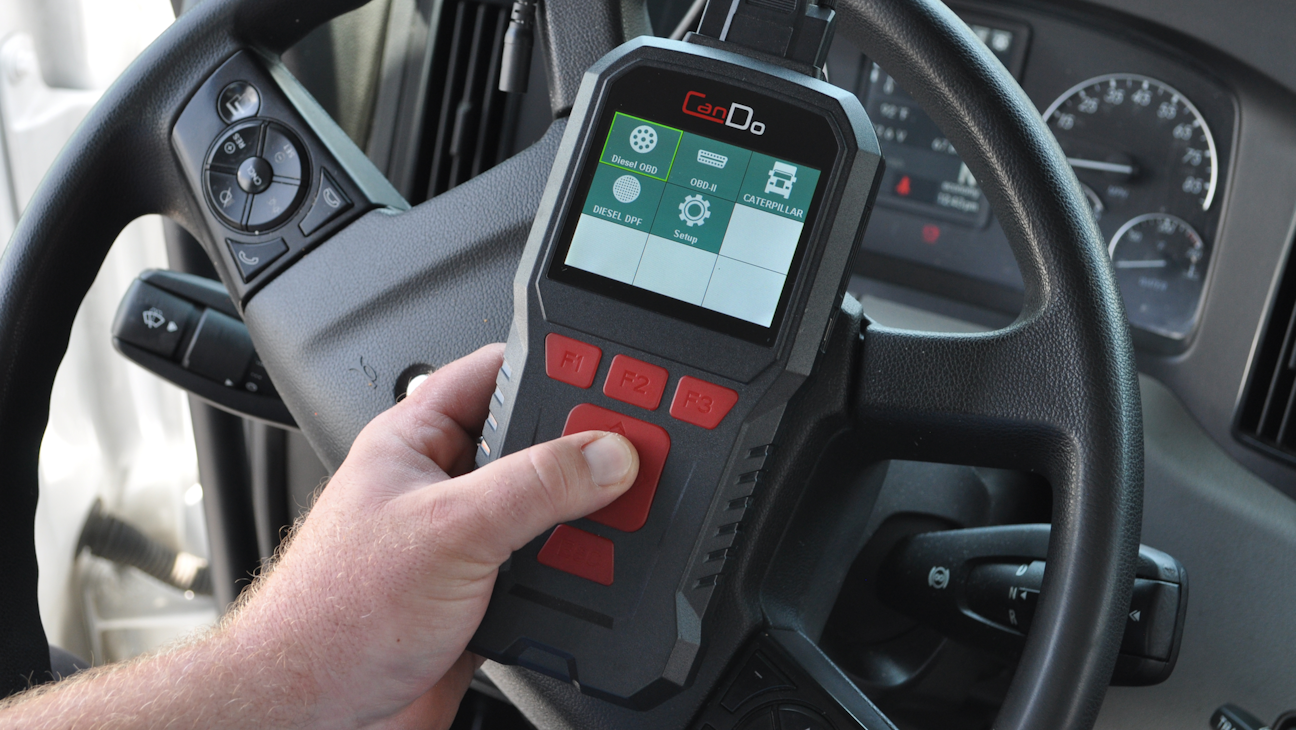Complex electronic components, sensors, and ECUs demand more from advanced diagnostic scan tools.
Truck technology is increasingly complex, and significant growth in component electrification, sensors, and electronic control units (ECUs) has made diagnostic scan tools essential to repairing and servicing vehicles.
“Electronic components and sensors have seen a dramatic growth since the 1980s, when a few sensors started to be used on the vehicles,” said Allison Whitney, a spokesperson for Autel, a developer of intelligent diagnostics, detection, and analysis systems. “Today, most vehicles have in excess of 80 sensors and a myriad of components, including those used in advanced driver assistance systems, such as cameras, radar, ultrasound, and lidar devices.”
Duane Watson, technical trainer for Bosch Aftermarket Service Solutions, said there has also been exponential growth in vehicle comfort features and solutions designed to improve fuel mileage, such as variable flow AC compressors or electronically controlled radiator shutter vents that streamline aerodynamics. These components have added even more electronics and sensors.
Thomas Kotenko, general manager for NEXIQ Technologies, said the number of electronic sensors on equipment will continue to increase. “We’ve all heard about the move to electric vehicles,” he said, adding that vehicles are essentially becoming moving computers.
Jason Hedman, product manager at Noregon, a diagnostic, repair, and data analytic solutions provider, said the days of fixing a truck with a basic scan tool and a wrench are gone. “There are so many ECUs and sensors on a truck that a tool with guided diagnostic features and troubleshooting assistance is now a requirement for all shops,” he said.
Repairing a truck today is a matter of signals, said Bruno Gattamorta, vice president of sales and marketing, Cojali USA Inc., which manufacturers the Jaltest Diagnostics tool. “If you can’t read a signal, you can’t get the results. You can’t read the signal without a computer,” he said.
Now, a seemingly simple task, such as an oil change, might necessitate a technician use a scan tool with service capabilities to connect with the vehicle and reset the engine service light, Whitney said.
Even if a repair entails physically wrenching on a part, more often than not the truck’s computer has to be told that the repair has been done, followed by clearing the corresponding code. Plus, replacing certain parts requires a relearn or recalibration of the part, which involves using a diagnostic tool, said Victor Rivilla, marketing director for CanDo International.
“One typical example is chasing a misfire and finding that it is caused by a faulty injector. In most cases, the injector cannot simply be swapped in and the truck driven,” Rivilla said. “Trim file codes need to be programmed into the injector, which entails the use of a diagnostic program or scan tool.”
CanDo’s Pro Tab and HD Pro III cover Classes 4 to 8 commercial vehicles and off-highway equipment. “Engines, brakes, transmissions, body controls, and basically everything that has a sensor or module can be scanned and diagnosed. Both tools also offer full bidirectional testing of components and special functions, such as relearns, calibrations, and parameter changes,” Rivilla said.
Demanding more from scan tools
Scan tools have advanced significantly. “Originally, there were simple engine code readers that were essentially used to detect emissions issues and resolve issues preventing vehicles from passing state inspections. Next came four systems readers to detect faults in engines, transmissions, ABS (braking systems), and SRS (airbags),” Autel’s Whitney said. “Today, technicians need all-systems scanners that can detect faults in every available system on that vehicle.”
With more electric components comes more information, trouble codes, inputs, and outputs technicians have to decipher, NEXIQ’s Kotenko said. “When an input or output fails, that’s when you get that trouble code,” he explained, adding that the code will identify the area or sensor experiencing a failure. “The trouble code would state the O2 sensor has trouble. As you drill down, it could be the wire or something else, but it will certainly give the technician a general area of where to seek that fault.”
Not only are there more electronic control units, also called electronic control modules, but the systems are talking to each other, which means the health of the CAN bus is critical, Kotenko said.
Whitney said a good diagnostic tool should identify the fault, enable the tech to view the associated system operations at the time the code was set, and test individual components to see if they have failed. “More advanced tools should support accessory diagnostic tools such as battery testers, oscilloscopes, and CAN bus testers, enabling the technicians to take a deeper dive into the communication and hands-on component testing,” she explained.
Autel’s MS909CV tool, which includes a module topology map and ADAS calibration, will automatically identify the vehicle identification number (VIN), then scan all modules within the vehicle system and show a single screen visual map of how all the modules are connected on different lines to each other. Using color-coded identification, the technician can see which modules are operational or have different issues, or if they are present but not responding at all, giving technicians a new way to diagnose possible vehicle issues.
Preventing misdiagnosis
Increased information can help technicians minimize the risk of making a mistake. Watson said a technician who doesn’t know how to diagnose an AC system with a variable compressor could easily make a misdiagnosis.
“Having a scan tool that will give them all the correct data of the AC system, including inputs and output data, and utilizing the correct tools to validate the pulse width modulated solenoid that controls the flow rate that is built into the compressor with a tool, such as the Robinair EVDC100, that can help validate that solenoid as well as the wiring to and from the body control module and the AC compressor,” Bosch’s Watson said.
Because demands on vehicle battery systems have increased, battery analysis tools are becoming more critical. Autel offers a line of starting and charging analysis tools that can walk technicians through the process of analyzing each of three components that comprise the starting and charging system—the battery, the starter, and the alternator—giving a clear and concise analysis of each system along the way. The testers use adaptive conductance to measure battery health, comparing its ability to conduct energy today to when it was purchased, Autel’s Whitney said.
Saving time
Uptime is critical for fleets, and diagnostic tools are designed to help technicians diagnose and repair equipment faster. Noregon’s Hedman said a technician using a diagnostic application will locate the root of a failed sensor exponentially quicker than one without, while committing fewer mistakes during the process.
Noregon’s JPRO includes a troubleshooting module called Fault Guidance that guides the user down the optimal troubleshooting path to find the root cause. “Without that guidance, a technician may attempt various repairs until something works,” he said. “A technician might try replacing six different sensors and a wiring harness before the problem is corrected. Introducing guided diagnostics to the equation lets the user determine the cause of the failure before replacing a failed sensor or wiring harness.”
Bosch’s ADS525X and ADS526X tools provide a large amount of live data, so technicians visually see what is happening, Watson said. “These same tools can be outfitted with electrical wiring diagrams right on the tool to help them trace or track electrical issues as well as having built-in Bosch repair source that can give step-by-step diagnostic and repair procedures right at the scan tool,” he said. “They no longer have to leave the vehicle and possibly lose their focus going to another computer or book to find this information.”
Staying current
Close working relationships with equipment manufacturers are critical to securing the latest information and updating technology, NEXIQ’s Kotenko said.
Cojali’s Gattamorta said this is an ever-evolving industry, so tools have to be updated as equipment advances. “Our tool updates three times a year,” he said.
Autel releases software updates to its tablets monthly, enabling users to perform the needed diagnostics and services on the latest vehicles as well as the systems updated by the OE, Whitney said.
By Mindy Long
Source: https://www.fleetmaintenance.com







